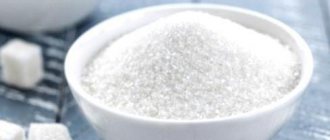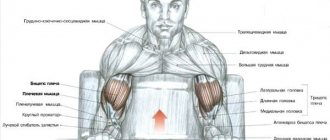If a woman goes on a diet and works hard on her abs, it means she should go to the sea in a week. Unfortunately, only significant dates force most ladies to pay attention to their excess weight. However, few people think about how much weight you can actually lose in a week. Diet predictions and actual results rarely coincide, for which there are several explanations.
How much weight can you lose in a week?
Minus 10 per week is the maximum that strict nutritional models promise. Many diets promise to get rid of 5–7 kg during this period. How much weight you can realistically lose in a week depends on several aspects:
- Initial mass. Ladies weighing more than 100 kg, with very strict restrictions, may well lose up to 10 kg, but if a woman or girl weighs within 60 kg, then the maximum weight will barely exceed 3 kg. But on average, how much weight you can lose in a week as a percentage is 5% of the initial weight.
- Floor. According to scientific data, men lose weight faster, which is due to metabolism, which is 10% faster in men.
- Age. After 45–50 years, the amount of muscle decreases, and the fat layer increases, which provokes a slowdown in metabolic processes. Therefore, young people lose weight faster than people who have overcome the forty-year mark.
- The maximum amount of weight you can lose in a week directly depends on your calorie deficit. The larger it is, the more intense the weight loss occurs.
- Duration of sleep. According to scientific research, people who sleep 8 hours lose more lipids compared to those who sleep only 6 hours.
- Duration of the diet. The initial stage for most people is accompanied by significant weight loss. But subsequently, when the body adapts to the new diet and regimen, it begins to use its reserves more economically, weight loss slows down, and in the future a plateau effect may even occur - when, despite the restrictions, the weight stays the same. Therefore, the results of the first, second and subsequent weeks will vary.
Summarizing, we can come to the conclusion that in a seven-day period it is possible to lose weight by 5 kg, and with a large body weight, by 10 kg. But this will not mean that the same amount of fat is lost.
If you eat very little, how much weight can you lose in a week?
This question is often asked by people who have just embarked on the path of losing weight. Little is a subjective concept. Some people think that they eat in small portions, but do not notice the amount of food they eat in the intervals between main meals. The method of preparing food is also of great importance - the calorie content of the same product will vary greatly depending on whether it is boiled or fried in oil.
Only counting calories can give a clear picture. Methods of 1000 kcal, 1200 kcal, 1500 kcal often appear on the Internet. The last option is the most optimal. Weight loss with such limits varies between 700 g–1 kg per day, up to 5 kg per week. But the results will also vary for everyone depending on age, starting point, and physical activity.
How much weight can you lose in a week: fat loss
Most fast weight loss methods involve a detox effect. Excess fluid and stagnant feces are removed from the body, which has nothing to do with fat burning. Weight loss also occurs due to the loss of muscle tissue, and with protein deficiency, it is burned many times more intensely.
On a note! To lose 1 kg of fat, you need to burn 7700 kcal.
Even if the body is put into absolute fasting mode, it will take 4–5 days to burn 1 kg of fat. If you create a daily calorie deficit of 500 units, in a week a person will lose approximately 500 g of fat, while the deviation of the scales will be 2 kg.
If we talk about the percentage, the share of fat for each kilogram lost does not exceed 16%. According to observations, intensive fat burning begins only 10–15 days after the start.
How quickly you can lose weight or weight loss strategy
Real weight loss looks non-linear:
This is due to the fact that the body adapts to the changes that occur during the diet:
- Your weight decreases, which means you need less energy for basal metabolism (read more about the effect of energy balance on body weight);
- Since you eat less, the thermic effect of food (calories spent on digestion) decreases;
- Your expenses for training activity are reduced, because... the body weighs less and fewer calories are needed to carry out any work;
- It is possible that expenses for household needs will decrease - when there is little energy from food, we are less willing to do something, we get tired faster, etc.
To respond to the body's adaptation to the diet, correction of the deficiency is necessary. I talked about it in detail in this article. Read and implement.
But even with deficit correction, we need complete breaks during the diet:
- For psychological relief. By dividing your diet into small stages, you are less likely to lose control or give up the idea of losing weight altogether.
- To adapt the body to a new weight and diet. The biggest impact of a diet break is to reset the hormonal system (leptin, insulin, thyroid hormones and others), which constantly signals the brain to slow down the rate of fat burning.
A full break means we are on maintenance calories or ±10% of that number. The rest of the BJU numbers will remain the same as on a healthy diet (about 2 g of protein and 1 g of fat per 1 kg of weight and at least 100 g of carbohydrates per day).
The smoother the changes, the greater the chances of success and maintaining the results of the diet forever.
Marathons, crazy drying, and weight loss only work for a short time. You will get results from draining water from the body in case of extreme rates of weight loss (for example, before a competition or a significant event). For other cases, if a calorie-restricted diet is a burden to you, then after the end of the diet you will return to your usual diet, and as a result, the weight will return.
Therefore, we lose weight slowly, take breaks, consolidate the result, and at the same time build a diet that we can stick to constantly (all our lives) and feel comfortable . And if necessary, it is easy to adjust it to suit our goals (weight gain, maintenance or weight loss).
Again:
During a diet, you need to develop a diet that you can stick to for the rest of your life.
It is very difficult to lose weight and stay with the results if you adhere to a strict diet (unnecessary restrictions, exclusion of certain foods, etc.) and do not give your body a break.
In general, I have a wonderful article about nutrition - how to build a diet for weight loss without denying yourself anything.
Therefore, the weight loss strategy that Lyle McDonald suggests is to gradually reduce the percentage of fat by 5% in one cycle with a complete break in the diet for 4-8 weeks after that.
For example, we start losing weight with 30% body fat. We lost up to 25% of weight and took a complete break for 4-8 weeks. Then we lose weight to 20% fat and again take a break of 4-8 weeks. We start the next cycle with 20%, etc.
During a complete break, weight may increase and this is normal. The increase will mainly be due to an increase in carbohydrates in the diet - glycogen and water. They will easily move into the next cycle (two steps forward, one step back). It will be great if during this period the emphasis is on gaining muscle mass. This will also help you burn fat better in the future.
Popular diets: how much weight can you lose in 1 week?
The number of diets is in the thousands. Some recommend creating a diet based on protein dishes, others on carbohydrates, and others suggest alternating, avoiding salt or some food group. Let's look at the most popular methods.
Protein diet
The main concept is to include foods with a high protein content in your diet: seafood, lean meat, fish, cottage cheese, egg whites, legumes and reduce carbohydrates as much as possible. These include the Dukan, Atkins, Kremlin diets and many others. The amount of carbohydrates allowed may vary, but the main principle remains the same.
Benefits of protein diets:
- weight loss up to 3–5 kg per week;
- muscle tissue is preserved as much as possible;
- Protein products provide good saturation.
Flaws:
- a large number of contraindications;
- lack of carbohydrates causes weakness, dizziness, migraines, decreased performance, and decreased brain activity;
- Excess protein foods provokes constipation, the development of gout, and the appearance of acetone odor from the mouth.
Petal Diet
There are two options - 6 and 7 petals, their number indicates the duration of the dietary course. How much weight can you lose in a week – from 2 to 6 kg.
The nutrition model is a complex of mono-diet days:
- fish;
- vegetables;
- bird;
- cereals;
- cottage cheese;
- fruits;
- exclusively water (seventh day in the 7 petals version).
Essentially, this is alternating protein and carbohydrate days. It is not recommended to swap positions. To increase your mood and motivation, you need to build a paper flower with 6 or 7 petals. Everyone signs according to the menu of the day. At the end of this day, the petal comes off.
The advantages of this approach include the following:
- there is no need to study long lists of permitted and prohibited foods, since the menu for one day involves the use of strictly one group of foodstuffs;
- an impromptu chamomile attached in a prominent place visually demonstrates progress;
- significant plumb line;
- budget set of products.
Vegetable and fruit diets
Most variations involve the use of seasonal vegetables or fruits, on which the diet is based; the menu can be supplemented with an egg, a portion of porridge or soup. Apple, carrot, beet or radish - the principle is the same for all, and weight loss occurs mainly due to the diuretic and laxative properties of the product. On average, up to 3 kg of weight is lost per week.
Salt-free diet
Complete abstinence from salt ensures a weekly weight loss of up to 3–5 kg. But the lack of salt does not in any way affect fat burning. Therefore, only water leaves.
Consequences of rapid weight loss
After following a Spartan diet for a week, many breathe a sigh of relief and return to their usual diet. As a result, the lost kilos quickly return, and often together with their “comrades”. The fact is that with rapid weight loss, water and waste products of the body are predominantly lost. The water balance is quickly restored, and after the economy regime, the thrifty body, taught by experience, begins to create new fat depots. As a result, the percentage of body fat increases, which negatively affects not only the scales, but also the volume of the body.
An equally deplorable consequence is sagging skin. In a short period of time, the dermis does not have time to regenerate, and the skin literally hangs, this is especially noticeable in the abdominal area - the appearance of a so-called apron on the arms. This cosmetic defect can only be corrected surgically, which not everyone has the courage or finances to do. Therefore, before setting a goal to quickly lose weight in a short period of time, it is worth remembering that the result will only be a deterioration in appearance.
Summarizing
When making a decision to lose weight, you should not chase the time frame in which you want to lose those hated kilograms. You just need to decide to change your usual lifestyle and pleasant surprises will not keep you waiting.
Basic principles of safe weight loss:
- Avoiding unhealthy snacks. Replacing junk food and sweets with healthy afternoon snacks - fruits, nuts, dried fruits.
- Diet variety. Maintaining a balance of proteins, fats, carbohydrates.
- Increasing physical activity. Performing simple exercises, preparing the body for intense training.
If you follow the recommendations of specialists, then, judging by the numerous reviews of those losing weight, you can not only become slimmer, but also maintain the result so that the kilograms do not return and health problems do not arise.
How many kg per week can you lose weight without causing harm to your health?
Nutritionists strongly advise losing weight by no more than 4–5 kg per month. This will allow you to create a balanced diet: the body will receive all the necessary nutrients and microelements, and avoid the appearance of skin defects - stretch marks, sagging, loss of turgor and elasticity.
Rules for safe weight loss:
- Calculate your individual calorie intake. To do this, you can use an application on your phone or a calculator for your PC. The formula takes into account height, weight, age and gender, and level of physical activity. 10–15% should be subtracted from the resulting figure. This will be the daily calorie requirement for safe weight loss.
- Listen to the recommendations of nutritionists and drink at least 2–2.5 liters of fluid per day. Water helps eliminate toxic compounds that are formed as a result of the breakdown of lipids. Also, if you drink water 20–30 minutes before a meal, the volume of portions eaten will automatically be reduced.
- The menu should include proteins, fats, and carbohydrates. Sufficient consumption of proteins allows you not to lose muscle tissue in the process of losing weight, burns fat deposits faster, and proteins are also the building material for all cells.
- Carbohydrates are divided into fast and slow. The first include products containing sugar and wheat flour. These are sweets and confectionery. Such carbohydrates should be minimized. But slow ones, they are complex, are beneficial for losing weight. They provide a long-lasting feeling of satiety, contain dietary fiber, which improves the functioning of the gastrointestinal tract, and promotes the natural evacuation of waste products and toxic compounds. Complex carbohydrates – plant foods, cereals, fruits, vegetables.
- Fats also play an important role in weight loss. Healthy ones include unrefined vegetable oils (in limited quantities), fat contained in fish, nuts, avocados, and seeds.
- Refusal of empty calories - junk, fast food, sweet soda, confectionery.
- Minimize the consumption of fried foods, give preference to heat treatment methods such as baking, stewing, and boiling.
- Safe weight loss also involves limiting the consumption of alcoholic beverages. Despite the fact that the calorie content of the same beer is comparable to milk, intoxicating drinks are drunk in large quantities and also provoke severe attacks of hunger.
IMPORTANT! Informational article! Before use, you should consult a specialist.
How to count calories?
It is best to keep track of the amount of calories you are losing using a special food diary. Using tables of dietary fat and calorie content of foods makes it easier to track your daily calorie intake. The main thing is to take into account the exact mass of the portion.
Eating about 22-26 kcal per kilogram of your own weight helps you lose weight and stay healthy. Multiplying your weight by the norm allows you to calculate your daily calorie intake, taking into account the fact that the amount of protein per 1 kilogram of weight should be 2-3, the same amount of carbohydrates, and fat 1-2 grams. To calculate how much this is in calories, you can take into account the fact that for every gram of protein there are 4, carbohydrates - 4, and fat - 9 kilocalories.
How to count calories
Calories are a unit of measurement of the energy value of food along with proteins, fats and carbohydrates.
The calorie norm is different for each person; it is calculated in accordance with body weight, age, and physical activity. On average, an adult man needs 1700 kcal per day for normal life, a woman – 1200 kcal.
Calories enter the body with food, and are expended with energy reserves - during mental or physical work. Limiting incoming calories and actions aimed at burning them contribute to weight loss.
Calorie content of products can be found on the packaging. It is indicated per 100 g of product.
It is more difficult to calculate the calories of a finished dish. To do this, you need to weigh the portion on a scale, and then multiply the weight by the number of kcal per 100 g of product and divide by 100.
Those products that are supposed to be thermally processed during cooking must be weighed dry. Pasta and cereals, for example, change their mass during cooking due to water. Meat and poultry, on the contrary, are becoming smaller.
Keeping a calorie diary is not difficult; all you need is a table scale and a small measuring stick.










